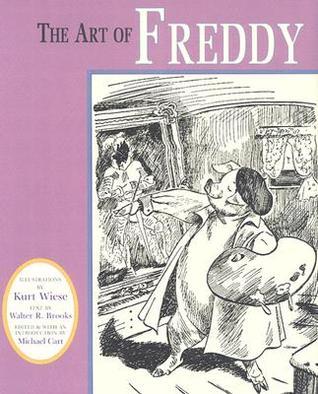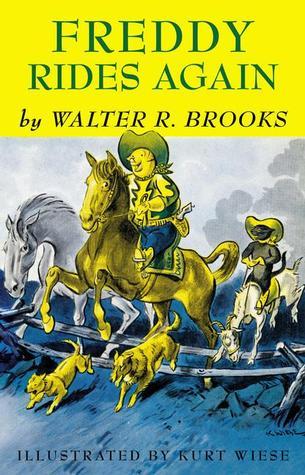
Part of Series
The year 2002 marks the seventy-fifth anniversary of the first appearance of Freddy the Pig-that illustrious barnyard character called "that charming ingenious pig" by The New York Times. Walter Brooks' Freddy the Pig first appeared in print in 1927, in To and Again (later published as Freddy Goes to Florida). Devotees and acclaim soon followed, as did the winning relationship between Brooks and illustrator Kurt Wiese. The result was twenty-six Freddy books in all, each accompanied by Wiese's vibrant and comic illustrations. As Brooks once said, "Kurt Wiese draws such very sympathetic pigs!" Celebrating the seventy-fifth anniversary is this delightful volume of Kurt Wiese's illustrations, capturing the incomparable Freddy in his many guises-as detective, poet, banker, and pilot, just to name a few! Here, too, are Freddy's adventures and misadventures, his human and barnyard friends and foes. Together with choice bits of Brooks' text, Kurt Wiese's illustrations capture the rollicking humor and dramatic spirit of Freddy's world. Included, too, are several exciting original Freddy illustrations-never before in print from the collection of Lee Secrest, former president of Friends of Freddy, and keeper of the Freddy archives. An introduction by Michael Cart, one of the foremost authorities on all things Freddy puts Kurt Wiese's life and art into context with Freddy and his creator, Walter Brooks.
Author

Walter Rollin Brooks (January 9, 1886 – August 17, 1958) was an American writer best remembered for his short stories and children's books, particularly those about Freddy the Pig and other anthropomorphic animal inhabitants of the "Bean farm" in upstate New York. Born in Rome, New York, Brooks attended college at the University of Rochester and subsequently studied homeopathic medicine in New York City. He dropped out after two years, however, and returned to Rochester, where he married his first wife, Anne Shepard, in 1909. Brooks found employment with an advertising agency in Utica, and then "retired" in 1911, evidently because he came into a considerable inheritance. His retirement was not permanent: in 1917, he went to work for the American Red Cross and later did editorial work for several magazines, including The New Yorker. In 1940, Brooks turned to his own writing for his full-time occupation. Walter married his second wife, Dorothy Collins, following the death of Anne in 1952. The first works Brooks published were poems and short stories. His short story "Ed Takes the Pledge" about a talking horse was the basis for the 1960s television comedy series Mister Ed (credit for creating the characters is given in each episode to "Walter Brooks"). His most enduring works, however, are the 26 books he wrote about Freddy the Pig and his friends. Source

